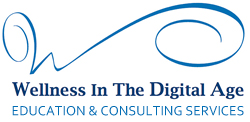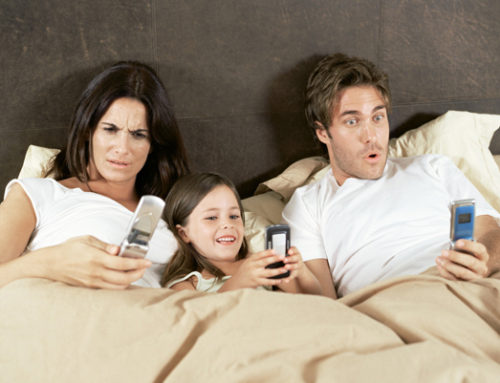 Seems like a great idea to keep your baby safe: an app on your smartphone allows you to monitor your baby’s breathing, heart rate etc. so you know when they are in trouble.
Seems like a great idea to keep your baby safe: an app on your smartphone allows you to monitor your baby’s breathing, heart rate etc. so you know when they are in trouble.
The sensors are embedded in the baby’s socks, diapers, sleepwear.
A potentially life-saving advancement in wearable tech? Another ‘smart’ technology?
Or, a potentially harmful exposure of wireless microwave radiation putting the infant’s health, and potentially her life, at risk?
Some years ago, I met a family whose daughter was born with neurological issues. For her safety, and her parent’s peace of mind, she was sleeping on a wirelessly-connected sensor pad.
The levels of radiation right against the child’s body were within government-sanctioned levels (which are based only on thermal exposure), yet levels considered harmful by standards based on non-thermal biological effects.
If you have followed the evidence, you know that adverse health effects can occur in non-thermal levels a fraction of the accepted standard.
What this means is that the non-thermal levels of radiation emitted by these sensors are not strong enough to warm human tissue – so deemed safe by gov’t standards.
However, there is extensive published and peer-reviewed evidence that ‘low’, non-thermal levels are harmful to human health. And children are most vulnerable.
As this was a child at risk a monitor was an asset, so the family switched to a wired-only sensor pad.
In addition, they replaced their home’s wireless router and all computers with a wired-only system to further reduce the exposure for the child and the whole family.
Recently the Journal of the American Medical Association published a paper about wearable tech for babies.
Epidemiologist Joel Moskowitz, Ph.D., commented,
“The authors of this new paper criticize the marketing of smartphone-integrated, infant physiologic monitors to parents of normal infants.
The paper should have included a summary of the research which suggests that wireless radiation exposure adversely affects infants because these potential health risks far outweigh any potential benefit from use of wireless monitoring devices with normal infants.
Joel M. Moskowitz, Ph.D., Director
Center for Family and Community Health
School of Public Health
University of California, Berkeley
===
An excerpt from JAMA:
“The Emerging Market of Smartphone-Integrated Infant Physiologic Monitors
Viewpoint
January 24/31, 2017
Christopher P. Bonafide, David T. Jamison, Elizabeth E. Foglia. The Emerging Market of Smartphone-Integrated Infant Physiologic Monitors. JAMA. 2017;317(4):353-354. doi:10.1001/jama.2016.19137
No Abstract
Excerpts
In the past 2 years, a new class of infant physiologic monitors marketed to parents for use in the home has emerged. Smartphone applications (apps) integrated with sensors built into socks, onesies, buttons, leg bands, and diaper clips have the capability to display infants’ respirations, pulse rate, and blood oxygen saturation, and to generate alarms for apnea, tachycardia, bradycardia, and desaturation (Table). Despite the lack of publicly available evidence supporting the safety, accuracy, effectiveness, or role of these monitors in the care of well infants, sales of these products are brisk and the market is expanding….
There are no medical indications for monitoring healthy infants at home ….
The makers of consumer infant physiologic monitors have avoided US Food and Drug Administration (FDA) medical device regulation by not making claims that the devices prevent SIDS.
There are a few potential paths to establishing the safety, accuracy, and effectiveness of consumer infant monitors …
Even if consumer monitors were highly accurate, the clinical appropriateness of monitoring healthy infants would remain in question … these monitors could increase the risk of overdiagnosis and potential harm if these innocuous events generate alarms.
The current market of smartphone apps integrated with sensors that monitor infants’ vital signs are innovative and have potential to improve care. However, their performance characteristics are unknown to the public and there are no medical indications for their use. Until these monitors have been thoroughly evaluated and guidelines for use have been established, the recommendations physicians should give to parents who ask about these products is simple.
There is no evidence that consumer infant physiologic monitors are life-saving, and there is potential for harm if parents choose to use them.
Child and family advocates should make it clear to the FDA and policy makers that regulatory guidance and research evaluating the safety, accuracy, and effectiveness of these products are needed.”
If you know of parents using this wireless-based technology, please urge them to research this further so they can make more informed decisions about whether this is protecting, or harming, their child’s wellbeing.





Leave A Comment